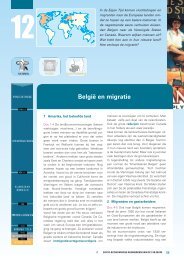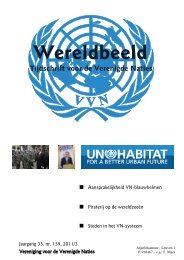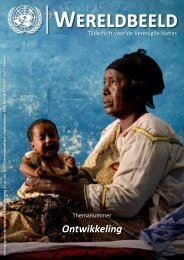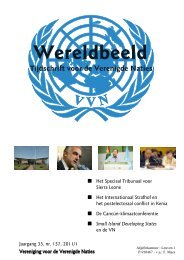Annex 5: United Nations Security Council Resolution 1874 (2009)
Annex 5: United Nations Security Council Resolution 1874 (2009)
Annex 5: United Nations Security Council Resolution 1874 (2009)
You also want an ePaper? Increase the reach of your titles
YUMPU automatically turns print PDFs into web optimized ePapers that Google loves.
Evaluating the risks which the DPRK poses to the region, and the world<br />
How should one evaluate the risks which the<br />
DPRK poses to the region, and to the world?<br />
According to the International Crisis<br />
Group, North Korea’s nuclear and<br />
missile arsenal is already of worrying<br />
size. Pyongyang possibly has deployed<br />
over 600 short-range Scud variants that<br />
can strike South Korea, and as many as<br />
320 medium-range Nodong missiles<br />
that can strike Japan. Long-range<br />
missiles with the potential to hit the<br />
continental U.S. are still under<br />
development. It probably has<br />
somewhere between six and twelve<br />
nuclear weapons, or at least explosive devices. Experts are divided as to whether<br />
weaponisation technology has advanced far enough for any of these to be now useable as<br />
warheads: for this purpose weapons have to be small enough to be mounted on missiles and<br />
durable enough to withstand the rigours of flight. Even if they are not at this stage now, each<br />
year and each test bring that moment closer. While North Korean military doctrine still<br />
emphasises offensive tactics, the nuclear weapons are of little use except for deterrence,<br />
which is reflected in the posture of deployments and in the command and control structure.<br />
Nevertheless, misperception, miscalculation, escalation or a change in military strategy could<br />
conceivably lead to their deliberate, accidental or unauthorised use. The risk of an accidental<br />
nuclear explosion cannot be ignored, given uncertainty about the sophistication of the<br />
North’s technology and its known generally poor safety standards (XXX, <strong>2009</strong>b). The reality<br />
of a nuclear North Korea menacing the world could eventually lead to a nuclear arms race;<br />
Japan might decide to go nuclear if it feels the US cannot sufficiently protect the country.<br />
Such a development might in itself alarm China and cause a Sino-Japanese arms race.<br />
There are however also other opinions out there. For instance, Douglas H. Paal, a wellesteemed<br />
analyst at the Carnegie Endowment for International Peace, thinks that North Korea<br />
poses no real threat to the world. According to Paal, North Korea lacks the industrial<br />
capacity to build large numbers of long-ranged missiles. The DPRK will not be able to build<br />
so many weapons as to become a strategic factor in the region. But Paal does acknowledge<br />
that North Korea does pose a threat to South Korea both through short-range missiles, and<br />
the possibility of using the nuclear weapons in the South, even though there are just a few, or<br />
artillery from the North to the South. That would be the end of the North regime if they were<br />
to attack the South, but they still have that capacity. Moreover, North Korea may force the<br />
Japanese to reconsider their very modest defense program. The Japanese have the capacity to<br />
move to a nuclear weapon. Certainly, politically Japan will debate whether or not move to a<br />
nuclear weapon in the short term because of this development in North Korea. And they do<br />
feel threatened by the North Korean short-ranged missiles and nuclear weapon (Paal, <strong>2009</strong>).<br />
The reassurances made by Paal thus at the same time constitute a ‘wake up’ call; the North<br />
Korean case is about much more than the operational assets and capabilities of the DPRK, in<br />
it’s essence it is about the way in which all regional and extra-regional powers perceive the<br />
“security complex”, and what each of them concludes must be done. If countries such as<br />
Japan or South Korea conclude they must develop a harsher stance, or invest in extra<br />
capabilities, a ‘security dilemma’ will be set in motion whereby other powers cannot but<br />
follow. In many ways, the dossier which will now be on the table of the UNSC will define<br />
the contours of peace and stability in the South Asian region for at least the coming decade.<br />
© <strong>2009</strong> – Dr. D. Criekemans – Negotiations in UNSC on the continuing security provocations by North Korea 18







